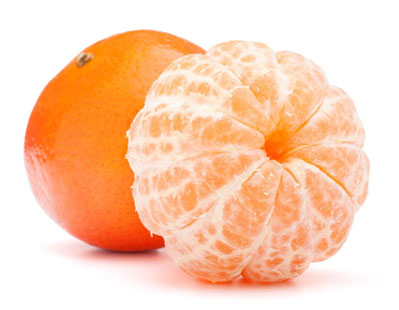Inflammatory degenerative diseases — from cardiovascular disease and cancer to neurodegenerative disease and many others — continue to surpass epidemic magnitudes worldwide, challenging researchers to better understand upstream drivers and identify key therapeutic targets.
According to a fast-growing body of published data, a major target has been found. More than 8000 studies show that the carbohydrate binding protein, galectin-3 (Gal-3), serves as a primary therapeutic target for the prevention and treatment of our most critical conditions, effectively meeting this growing demand in chronic disease management.
We now understand that as a culprit biomarker, extracellular Gal-3 functions as a key driver behind the development and progression of metastatic cancer, cardiovascular disease, organ fibrosis, neurodegenerative disease, immune dysregulation, premature ageing and many other conditions.
From this extensive body of published literature, only one available natural agent has emerged to demonstrate the singular ability to halt and reverse the harmful effects of Gal-3: a specific form of the nutraceutical ingredient modified citrus pectin (MCP) that’s derived from citrus peel pith and enzymatically modified to precise low molecular specifications for efficacy and bioactivity (PectaSol-C).
More than 50 published clinical and preclinical studies on this form of MCP demonstrate its critical, multifaceted benefits against heart disease, cancer proliferation/metastasis, organ fibrosis and other conditions characterised by elevated Gal-3.
In 2018, for example, clinical results from an ongoing multicentre trial on this form of MCP in biochemically relapsed prostate cancer were presented at the American Society for Clinical Oncology Genitourinary Conference. Reported in the Journal of Clinical Oncology, the study — “Effects of Pectasol-C Modified Citrus Pectin Treatment on PSA Dynamics in Non-Metastatic Biochemically Relapsed Prostate Cancer Patients” — demonstrated the ability of the only researched form of MCP to significantly slow PSA doubling time and halt disease progression in the majority of subjects.1
What is galectin-3 (Gal-3)?
Galectins are an evolutionarily ancient family of proteins that share a high binding affinity for carbohydrates with β-galactoside linkages. In the extracellular matrix, galectins interact with glycosylated proteins to mediate both cell-to-cell interactions and cell-to-matrix adhesion.
Within the galectin family, Gal-3 has unique properties. It is a beta-galactoside-binding protein involved in a wide array of biological processes, mainly related to cell cycle, immunity and injury repair. Gal-3 is found in the nucleus, cytoplasm, mitochondrion, fibroblasts, cell surface and extracellular matrix. Circulating Gal-3 levels increase with age, injury and chronic illness.
Extracellular Gal-3 acts as an adhesion surface protein, forming lattices with itself, binding glycoproteins and glycolipid membrane receptors and creating a gel-like biofilm that anchors other procancerous growth factors and inflammatory compounds within the extracellular matrix.
Several studies using preclinical models have demonstrated that “Gal-3 gene knockout” mice — tha is, those without the genetic ability to produce Gal-3 — are healthier overall than Gal-3 producing mice, as measured by markers of inflammation, fibrotic response and others.2–5
The most well-established pathogenic role of Gal-3 is in the development and migration of cancer. Gal-3 is over-expressed on the surface of cancer cells, acting as the primary adhesion molecule that allows cancers to proliferate, metastasize and evade the immune system.
Circulating Gal-3 is often substantially elevated in patients with cancer, particularly metastatic cancer. Because of its primary roles in cancer formation and progression, Gal-3 has been termed “the guardian of the tumour microenvironment.”6

Starting in 2006, researchers began to discover how elevated Gal-3 is also directly involved in other disease processes, predominantly chronic inflammation, the progression of inflammation to fibrosis and immune dysregulation. Galectin-3 plays a central role in the promotion of fibrosis, activating fibroblasts —the cells responsible for fibrogenesis/fibrosis — at sites of injury and inflammation.
Today, Gal-3 heralds one of the fastest growing fields of medical research, with compelling new data and large-scale studies continuing to highlight the mechanisms by which the overexpression of Gal-3 acts as an upstream initiator for an exhaustive range of pathogenic processes.
In May 2011, data from the Prevention of REnal and Vascular ENd-stage Disease (PREVEND) study, a 10-year all-cause mortality investigation involving close to 8000 people, demonstrated that elevated serum Gal-3 increased all-cause mortality three-fold in the general population.7 Another compelling large-scale study showed lower levels of Gal-3 in centenarians compared with those in their sixties and seventies who didn’t live as long.8
From driving proinflammatory, profibrotic and procancerous pathways to promoting immune evasion, metabolic dysfunction and blood-brain barrier permeability, Gal-3 plays such a fundamental role that some experts are calling for a new category of health conditions: Elevated Galectin-3 Diseases.
Classifying this myriad of conditions — from arthritis to zoster pain — that we now understand to be instigated and advanced by this culprit biomarker, is critical in advancing the application of Gal-3 as both a prognostic indicator and key therapeutic target.
The researched form of the nutraceutical ingredient MCP continues to gain recognition among scientists and health professionals worldwide as the only available agent shown to block the detrimental effects of elevated Gal-3. This form of MCP has been in development for more than three decades and was first used as a Gal-3 blockade strategy in the 1990s.
Modified citrus pectin: don’t be fooled by the name
As the research on this form of MCP continues, it’s critical to note that, in the nutraceutical world, MCP is not a carefully defined term. Experts emphasise that other “modified” citrus pectins do not offer the same benefits as the only researched, clinically studied and substantiated MCP.
Unmodified citrus pectin does not have the same short, systemically available polysaccharide chains as MCP … and thus remains in the gastrointestinal (GI) tract. And other “modified” pectins may simply indicate that the pectin has been altered in some way, but doesn’t contain the shorter polysaccharide chains and molecular structure required for efficacy.
The original and only proven effective form of MCP is prepared with a proprietary, non-GMO enzymatic process controlled by pH and heat, which breaks the long chain molecules of the native pectin to produce the correct molecular size and structure of <13 kilodaltons and <5% esterification.
According to the research, these are the precise specifications required for bioavailability and bioactivity — in particular, the ability of this MCP to enter the circulation from the GI tract to bind and block excess Gal-3.
Although the indications for this MCP as the only available Gal-3 blocker continue to expand, with new conditions continuously presenting in the published literature, consumers and formulators will be wise to heed the warnings of “borrowed science.” Unsubstantiated forms of MCP products continue to emerge in the marketplace from around the globe.
Despite manufacturer claims, independent analyses show that these products lack correct molecular specifications, have inconsistent molecular weight (batch-to-batch variation), often contain solvent residues and/or adulterants and, thus, will not provide the dynamic benefits consumers expect from the only researched form of MCP.
One recently published study highlights this point precisely. Performed on a previously unresearched brand of MCP, the study evaluated this ingredient’s ability to block Gal-3 in an animal model of cardiac fibrosis and remodelling. Results showed no benefits.9 Post-publication analysis found that the MCP used in the study did not meet the low molecular weight specifications required for efficacy.
Conversely, almost 50 published peer-reviewed research articles to date on the correct, researched form of MCP demonstrate consistent anti-inflammatory, antifibrotic, antioncogenic and immune modulation benefits via Gal-3 blockade in multiple organ systems.
The only proven modified citrus pectin
Research in cancer: With powerful antiadhesive, apoptosis-promoting properties, this researched MCP is shown in more than 15 published studies, including three clinical studies, to target numerous rate-limiting steps in cancer, primarily via its ability to inhibit Gal-3.10–12
Powerful synergistic potential: A number of studies highlight the ability of this MCP to enhance the efficacy and mechanisms of other therapies. For example, by inhibiting the antiapoptotic function of Gal-3 and enhancing apoptosis induced by cytotoxic drugs, this MCP demonstrates the ability to significantly increase chemotherapy efficacy and reduce multi-drug-resistance (MDR) potential.

In one study, it was shown to increase efficacy and allow for lower dosages of the toxic chemotherapy drug, doxorubicin, in the treatment of prostate cancer.13 Another published study, “Synergistic Effects of Pectasol-C Modified Citrus Pectin an Inhibitor of Galectin-3 and Paclitaxel on Apoptosis of Human SKOV-3 Ovarian Cancer Cells,” further demonstrates this form of MCP’s strong synergistic actions with specific chemotherapy regimens.14
This MCP is also shown to increase the effectiveness of radiotherapy and to synergise with two polybotanical anticancer formulas for breast and prostate cancer.15,16 MCP in combination with a purified botanical extract from magnolia bark, honokiol (protected by US Patent No. 8916541 and European Patent EP2661173B1), has also shown synergy for antioxidant and anti-inflammatory effects.17
Cardiovascular disease and fibrosis: One of the key areas of interest among researchers investigating MCP currently centres on its ability to slow and reverse cardiovascular disease. One landmark study illustrates the groundbreaking results being achieved with MCP in CVD models. Using MCP to block Gal-3, researchers prevented myocardial hypertrophy and interstitial fibrosis and decreased profibrotic response.2
Another significant study investigated the role of Gal-3 as a driver of oxidative stress in human cardiac fibroblasts, spontaneously hypertensive animal models and human aortic stenosis tissue. Results showed Gal-3 downregulates the antioxidant peroxiredoxin-4 (Prx-4) in cardiac fibroblasts, uncovering a new pathway whereby Gal-3 fuels cardiac damage. Importantly, MCP treatment restored cardiac Prx-4 and improved oxidative status.3
Additional inflammatory conditions, including liver and kidney disease, arthritis, obesity, neurodegeneration and infection have all shown a significant reduction by this researched form of MCP.
With clinical studies in the areas of CVD and other indications under way at prominent research institutes, this form of MCP is steadily earning recognition as a well-substantiated adjunct therapy offering unique mechanisms that are critical in the treatment of chronic disease.
Immune support: Beyond its ability to control excess Gal-3, this form of MCP also demonstrates additional mechanisms of action with benefits to other areas of health. In a study using healthy human blood samples, MCP was shown to produce a dose-dependent increase in B-cells, T-cytotoxic cells and NK-cells. MCP also induced a ten-fold increase in NK-cell activation and a 53.6% increase in the NK-cells’ functional ability to identify and destroy leukaemia cells.18
Safe heavy metal chelation: Three clinical studies highlight MCP as a safe chelator of heavy metals. MCP is shown to bind to toxic metals in the circulation, reducing blood levels and increasing the urinary excretion of lead, mercury, arsenic, cadmium and others — without disrupting essential minerals.19–21
GI health: This MCP is also shown to offer functional prebiotic benefits as an oligosaccharide-rich fibre. One study with the USDA and Rutgers showed that as a prebiotic fibre, MCP reduced Shiga toxin cytotoxicity from the aggressive strain of E. coli 0157:H7, which has been implicated in recent food contamination outbreaks.22
Formulating with MCP
Several published studies demonstrate the synergistic properties of the correct, original MCP and highlight its ability to enhance the benefits of other pharmaceutical and nutraceutical compounds and ingredients. Because of its interactions with Gal-3 and its ability to break Gal-3’s profibrotic lattice formation, it is hypothesised that this MCP can support other therapies in part by allowing treatments to better reach target tissues. Continued studies suggest that MCP offers significant synergistic enhancement potential when added to formulas for cellular health, cardiovascular health, immunity and other areas.
In the US, the researched form of MCP is patented for structure-function health claims related to cellular, cardiovascular and immune health, as well as inflammation, fibrosis and toxic metal body burden.
In the EU, MCP holds potential for strengthening immune and overall health formulas when combined with ingredients approved by the European Food Safety Authority (EFSA) for immunity: beta-glucans, astaxanthin, Grifola frondosa (Maitake) and Lentinus edodes (Shiitake), vitamins B6, C and D, and methylsulfonylmethane (MSM).
With more than 50 published studies, this specific form of MCP — bearing the correct molecular weight specifications as well as organoleptic profile — represents one of the most-researched and appealing nutraceutical ingredients on the market. Because it is the only available agent shown to address overexpressed Gal-3, independent studies continue to emerge in the published literature, adding to the broad-spectrum indications for this simple, naturally derived ingredient.
The field of Gal-3 continues to expand to previously undocumented conditions, as shown recently with findings in sepsis, mental illness, brain injury and others. Concurrently, we can expect the therapeutic significance of the correct form of MCP — the only commercially available natural Gal-3 inhibitor — to likewise increase, making it perhaps the most important ingredient available to support and maintain long-term health and wellness.
References
- D. Keizman, et al., Effect of Pectasol-C Modified Citrus Pectin (P-MCP) Treatment (tx) on PSA Dynamics in Non-Metastatic Biochemically Relapsed Prostate Cancer (BRPC) Patients (pts): Results of a Prospective Phase II Study,” J. Clin. Oncol. 36(6), 14 (2018).
- E. Martínez-Martínez, et al., “Galectin-3 Blockade Inhibits Cardiac Inflammation and Fibrosis in Experimental Hyperaldosteronism and Hypertension,” Hypertension 66(4), 767–775 (2015).
- J. Ibarrola, et al., “Galectin-3 Down-Regulates Antioxidant Peroxiredoxin-4 in Human Cardiac Fibroblasts: A New Pathway to Induce Cardiac Damage,” Clin. Sci. (Lond). 132(13), 1471–1485 (2018).
- J.R. Sádaba, et al., “Role for Galectin-3 in Calcific Aortic Valve Stenosis,” J. Am. Heart Assoc. 5(11), pii: e004360 (2016).
- L. Calvier, et al., “The Impact of Galectin-3 Inhibition on Aldosterone-Induced Cardiac and Renal Injuries,” JACC Heart Fail. 3(1), 59–67 (2015).
- P.P. Ruvolo, “Galectin-3 as a Guardian of the Tumor Microenvironment,” Biochim. Biophys. Acta. 1863(3), 427–437 (2016).
- R.A. de Boer, et al., “The Fibrosis Marker Galectin-3 and Outcome in the General Population,” J. Intern. Med. 272(1), 55–64 (2012).
- F. Sanchis-Gomar, et al., “Galectin-3, Osteopontin and Successful Aging,” Clin. Chem. Lab. Med. 54(5), 873–877 (2016).
- M.N. Nguyen, et al., “Galectin-3 Deficiency Ameliorates Fibrosis and Remodeling in Dilated Cardiomyopathy Mice with Enhanced Mst1 Signaling,” Am. J. Physiol. Heart Circ. Physiol. 316(1), H45–H60 (2019).
- H. Dresler, et al., “Effect of PectaSol-C Modified Citrus Pectin (P-MCP) Treatment (tx) on PSA Dynamics in Non-Metastatic Biochemically Relapsed Prostate Cancer (BRPC) Patients (pts): Results of a Prospective Phase II Study,” Eur. Urol Suppl. 17(14): e2849 (2018).
- M. Azémar, et al., “Clinical Benefit in Patients with Advanced Solid Tumors Treated with Modified Citrus Pectin: A Prospective Pilot Study,” Clinical Med. Oncol. 1: https://doi.org/10.4137/CMO.S285 (2007).
- B.W. Guess, et al., “Modified Citrus Pectin (MCP) Increases the Prostate-Specific Antigen Doubling Time in Men with Prostate Cancer: A Phase II Pilot Study,” Prostate Cancer Prostatic Dis. 6(4), 301–304 (2003).
- N. Tehranian, et al., “Combination Effect of PectaSol and Doxorubicin on Viability, Cell Cycle Arrest and Ppoptosis in DU-145 and LNCaP Prostate Cancer Cell Lines,” Cell Biol. Int. 36(7), 601–610 (2012).
- G. Hossein, et al., “Synergistic Effects of PectaSol-C Modified Citrus Pectin an Inhibitor of Galectin-3 and Paclitaxel on Apoptosis of Human SKOV-3 Ovarian Cancer Cells,” Asian Pac. J. Cancer Prev. 14(12), 7561–7568 (2013).
- S. Conti, et al., “Modified Citrus Pectin as a Potential Sensitizer for Radiotherapy in Prostate Cancer,” Integr. Cancer Ther. 17(4), 1225–1234 (2018).
- J. Jiang, I. Eliaz and D. Sliva, “Synergistic and Additive Effects of Modified Citrus Pectin with Two Polybotanical Compounds in the Suppression of Invasive Behavior of Human Breast and Prostate Cancer Cells,” Integr. Cancer Ther. 12(2), 145–152 (2013).
- C. Ramachandran, et al., “Synergistic Antioxidant and Anti-Inflammatory Effects Between Modified Citrus Pectin and Honokiol,” Evid. Based Complement Alternat. Med. doi: 10.1155/2017/8379843 (2017).
- C. Ramachandran, et al., “Activation of Human T-Helper/Inducer Cell, T-Cytotoxic Cell, B-Cell, and Natural Killer (NK)-Cells and Induction of Natural Killer Cell Activity Against K562 Chronic Myeloid Leukemia Cells with Modified Citrus Pectin,” BMC Complement Altern. Med. 11, 59 (2011).
- Z.Y. Zhao, et al., “The Role of Modified Citrus Pectin as an Effective Chelator of Lead in Children Hospitalized with Toxic Lead Levels,” Altern. Ther. Health Med. 14(4), 34–38 (2008).
- I. Eliaz, E. Weil and B. Wilk, “Integrative Medicine and the Role of Modified Citrus Pectin/Alginates in Heavy Metal Chelation and Detoxification — Five Case Reports,” Forsch Komplementmed. 14(6), 358–364 (2007).
- I. Eliaz, et al., “The Effect of Modified Citrus Pectin on Urinary Excretion of Toxic Elements,” Phytother. Res. 20(10), 859–864 (2006).
- R. Di, et al., “Pectic Oligosaccharide Structure-Function Relationships: Prebiotics, Inhibitors of Escherichia coli O157:H7 Adhesion and Reduction of Shiga Toxin Cytotoxicity in HT29 Cells,” Food Chem. 227, 245–254 (2017).
For more information, please contact Anat Stern, CEO, ecoNugenics




